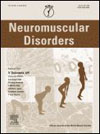 Duchenne muscular dystrophy (DMD) is strongly associated with a unique form of dilated cardiomyopathy. Cardiac complications are the leading cause of death in DMD; thus, longitudinal assessments and early intervention for cardiac dysfunction are necessary to improve prognosis. Two-dimensional echocardiography, which is routinely used for cardiac assessment, has some limitations for quantitative analyses in DMD patients with thoracic deformities and regional wall motion abnormalities in the left ventricle. Recently, real-time three-dimensional echocardiography has emerged as a feasible tool for cardiac assessment in various cardiac diseases. This study examined the utility of this technology in DMD. Left ventricular ejection fraction (LVEF), a major parameter of left ventricular function, was evaluated in 17 male DMD patients. LVEF values measured by real-time three-dimensional echocardiography were compared with those determined by two established nuclear cardiology methods: “the first-pass method of radionuclide angiocardiography” and “quantitative electrocardiogram-gated single-photon emission computed tomography”. A good correlation was observed for LVEF values, particularly between real-time three-dimensional echocardiography and “the first-pass method of radionuclide angiocardiography” (r=0.90, p<0.05). Thus, real-time three-dimensional echocardiography can provide an accurate measurement of LVEF in DMD patients with echocardiographic limitations.
Duchenne muscular dystrophy (DMD) is strongly associated with a unique form of dilated cardiomyopathy. Cardiac complications are the leading cause of death in DMD; thus, longitudinal assessments and early intervention for cardiac dysfunction are necessary to improve prognosis. Two-dimensional echocardiography, which is routinely used for cardiac assessment, has some limitations for quantitative analyses in DMD patients with thoracic deformities and regional wall motion abnormalities in the left ventricle. Recently, real-time three-dimensional echocardiography has emerged as a feasible tool for cardiac assessment in various cardiac diseases. This study examined the utility of this technology in DMD. Left ventricular ejection fraction (LVEF), a major parameter of left ventricular function, was evaluated in 17 male DMD patients. LVEF values measured by real-time three-dimensional echocardiography were compared with those determined by two established nuclear cardiology methods: “the first-pass method of radionuclide angiocardiography” and “quantitative electrocardiogram-gated single-photon emission computed tomography”. A good correlation was observed for LVEF values, particularly between real-time three-dimensional echocardiography and “the first-pass method of radionuclide angiocardiography” (r=0.90, p<0.05). Thus, real-time three-dimensional echocardiography can provide an accurate measurement of LVEF in DMD patients with echocardiographic limitations.
